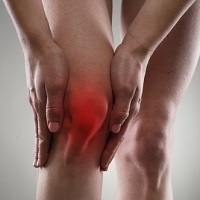
The joints most commonly affected are the neck, hips, knees, back and small joints of the fingers.
Initially osteoarthritis may be associated with an inflammatory process and the onset is seen with mild swelling and stiffness in the hands and affected joints. It is usually subtle and gradual.
Pain is the earliest symptom, which is made worse by exercise. The stiffness is transient. Usually it is short lived in the morning (less than 30 minutes) and may recur after periods of sitting or inactivity. It usually improves with exercise.
As the disease progresses, the motion of the joints is decreased and the person may notice tenderness and grinding noises in the joint. The joint eventually enlarges from bony outgrowth. The bony enlargement is irreversible.
If the ligaments become lax, for example around the knee, the joint has increased instability with more pain. Tenderness to the touch and pain when the doctor moves the joint are signs of advanced disease. At this stage muscle spasm and contraction of the muscles around the joints add to the pain.
Osteoarthritis of the hip is characterised by increasing stiffness and loss of range of motion. The patient may experience difficulty in climbing stairs or tying their shoelaces. This is in contrast to osteoarthritis of the knee in which the ligaments tend to become lax.




 Publications
Publications
 Partners
Partners










